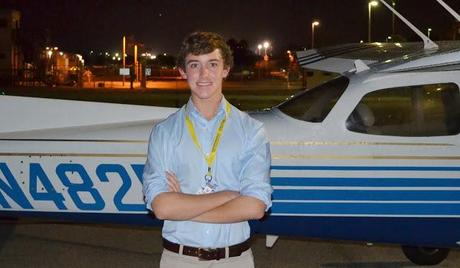- 1 more hour of night flying (2 more landings)
- 2.3 more hours of simulated instrument flying
- 3 hours of solo cross country time (including the "long" solo xc)
- Pass my FAA Written Exam
A week ago, before I really had to buckle down for final exams in school, I took my first ever night training flight with my instructor. We planned on a flight from Hanover KOFP to Charlottesville KCHO, returning to KOFP.

I arrived at the airport around 5:20pm, right after the sun had set. After a pre-flight and quick flight plan, we took off towards Charlottesville. We decided to practice tracking a VOR along the way, the Gordonsville VOR. Since KCHO is a Class D, Towered Field, I began by my communications with Potomac Approach, with the following transmissions:
--------------------------"Potomac Approach, 16 Hotel Victor" ("knocking on their door" vs dumping all of the information at once) --"16 Hotel Victor, Potomac Approach" "We are a Tecnam Light Sport passing over the Gordonsville VOR at 4500 feet, requesting a touch and go at Charlottesville with information Victor, 16 Hotel Victor" --"16 Hotel Victor roger, Squak 4423, proceed VFR on course to Charlottesville at 4500 feet, Charlottesville alitmeter 30.01" ..... etc. -------------------------- Below is an example video of mine, that includes transmissions when contacting approach control, and landing at a towered field (Richmond RIC, in this case):
So we were cleared into Charlottesville's airspace and switched over to their tower frequency. It's always fun to fly into KCHO because even though it's a commercial airport, it only has one runway, and isn't ever extremely busy, so it's not too confusing. We were actually cleared to land and fly left traffic for runway 21 immediately once contacting the tower. Flying at night is really enjoyable, as you can see things from much farther out compared to during the day. You can clearly see all the airports around you, from their green and white beacons. Flying in the pattern took a little getting used to, as student pilots always have a tendency to stay high at first when flying at night.
The videos below are of night landings at Buenos Aires and Los Angeles. You can see how unique cities look when flying above them at night. Make sure to turn the videos to HD:
Below is one of my favorite night flying videos, it really shows how cool it is from the cockpit of a small plane. (This video is from Lufthansa Flight Training Cadets, due to copyright issues, I can't embed it on this website. Click the "watch on YouTube" button after clicking play on the video below. Alternatively, click on this URL: Click Here)
Approaching too high happened to me on final into Charlottesville, I wanted to level off because the optical illusion of night flying makes you think that you're flying too low. My instructor quickly corrected me on this, and told me to aim for the very end of the runway. That ended up working out really well, and we had a smooth landing.
Here are some night flying tips from Sporty's:
We decided to head back to Hanover to do 7 more landings and takeoffs, contributing towards the 10 total landings and takeoffs at night required by the PPL. The coolest moment for me that night was the fact that I was the one adjusting and turning on/off the airport runway and taxiway lights. You just tune to the UNICOM frequency and click 7 times for full brightness, 5 times for medium, or 3 times for dim. I thought it was really cool to be 18 miles away, click the mic, and suddenly see the airport light up before me.
After 7 landings and takeoffs at Hanover, we packed the plane back into the hangar for the night. We only did 8 out of the required 10 landings and takeoffs, so that we could save the last 2 for the 1 hour of night training that I had left to do. Flying at night was a lot of fun, I really enjoyed being able to learn which types of landmarks one could use for night cross-countries (very bright lights!). Thanks for reading,-Swayne MartinTwitter: @MartinsAviation

